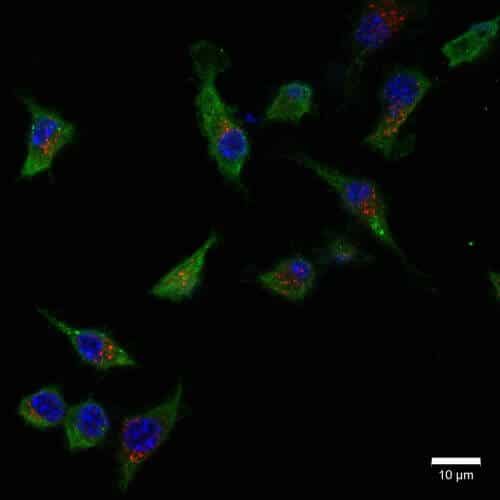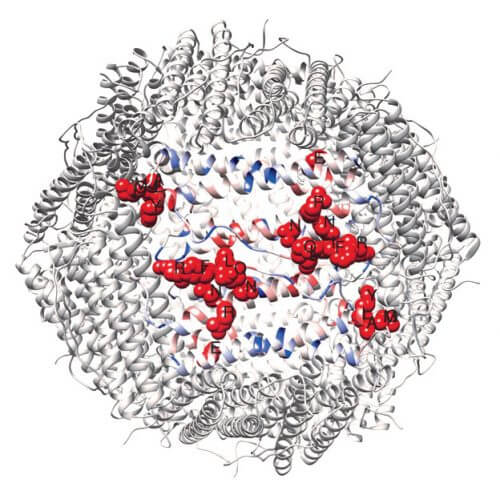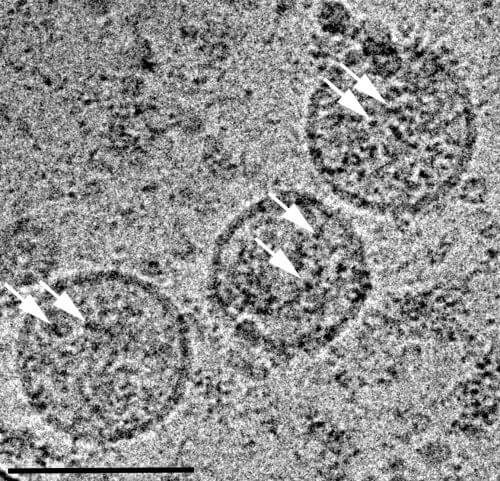New findings change the way we think about iron metabolism. The study was conducted by female researchers at the Technion in collaboration with colleagues from four countries abroad

The magazine Blood presents in the cover story of its latest issue, published on January 18, a study conducted by Dr. Mariana Truman-Rozenzvit and Associate Professor Esther Miron-Holtz from the Faculty of Biotechnology and Food Engineering at the Technion. The study presents for the first time a transport and secretion mechanism of ferritin, a protein that until now was considered mainly central to the storage of iron in the human body. This key study changes our way of thinking about the transport of iron in the body and opens new channels for research and the development of future treatments for many diseases.
Iron is an essential element for the proper functioning of most living organisms. It is responsible for the transport of oxygen in the red blood cells, the activation of enzymes related to the creation of DNA and the production of energy in the mitochondria of the cell. Iron deficiency Harms the transfer of oxygen to all parts of the body, the division of cells and the production of energy in the cell. excess iron And 'bare' iron, i.e. iron that is not wrapped in any protein, may trigger oxidative stress that can harm the organism. Therefore, a deficiency or an excess in the iron balance may lead to the development of inflammatory diseases, cancer and neurodegenerative diseases such as Alzheimer's and Parkinson's.
The ferritin protein is one of the main factors in regulating the level of cellular iron and protecting the body against iron poisoning. The article describes the distribution of ferritin inside the cell and its secretion mechanisms outside the cell. According to Prof. Mishna Miron-Holtz, "Ferritin is an important protein for the iron balance in the body, and there is a strong correlation between disruptions in the iron and ferritin balances and various pathological and neuropathological phenomena. Our findings enable a more accurate and in-depth understanding of ferritin's characteristics, and of the basic molecular processes it undergoes. Such an understanding is of great significance because it may contribute to the development of treatments for many neurodegenerative diseases, which are characterized by an abnormal distribution of iron in the brain."

The study published in Blood focused on the characterization of the intracellular distribution and secretion of ferritin from macrophage cells - cells from the immune system that play a central role in systemic iron circulation. The study included the use of bioinformatic tools to investigate the evolution of ferritin secretion, its spatial structure as well as topologies that may be involved in ferritin distribution. "Using these tools allowed us to predict areas on the ferritin surface that play a role in its secretion. With the help of diverse biochemical methods, as well as the CRISPR-Cas9 technology that enables rapid editing of the genome, we discovered that damage to certain sites on the surface of ferritin changes its secretion," says Associate Professor Esther Miron Holtz.
The article reveals that ferritin is secreted by two non-classical secretion mechanisms, where one of the mechanisms is through a nanometer vesicle called an exosome. According to Dr. Truman-Rozenzvit, "Many research groups are currently studying the dynamics of substance transport in exosomes - a platform that allows these substances to penetrate the blood-brain barrier. The current publication shows, for the first time, that ferritin containing thousands of iron atoms is found in extracellular exosomes. It is still not clear what the function of this ferritin is, but we estimate that ferritin has a key role in the distribution of intercellular iron in tissues such as the brain, and not only in the safe and available storage of iron inside the cell." The discoveries of the current study bring ferritin to the forefront of the systemic metabolism of iron and reveal that ferritin not only stores iron but also transports it in a controlled manner, and in fact serves as a central controller of iron in the body.

about the researchers
Associate Prof. Esther Miron-Holtz, born in Switzerland, studied nutritional sciences at the Faculty of Agriculture and completed a master's and a master's degree in the Department of Human Nutrition of the School of Medicine at the Hebrew University under the guidance of Prof. A.M. Konin and Prof. Y. The late Metzner. She did her post-doctoral research at the NIH (US National Institutes of Health), and in 2005 she immigrated to Israel again and since then she heads the molecular nutrition laboratory at the Technion. In the laboratory, the control of the iron balance in various organs is studied and its role in the development of pathological processes leading to inflammatory bowel diseases, male fertility problems and more. Following the article in Blood, the laboratory researchers will continue to study the role of secreted ferritin in the healthy organism and in various diseases and develop approaches for therapeutic intervention in the distribution of iron in the tissue.
Dr. Truman-Rozenzvit graduated with a bachelor's degree in biology at the Technion and enlisted in the Navy as a research officer. During her military service at the Institute of Naval Medicine, she studied oxygen toxicity in the brain using research pressure cells. At the same time, she completed an additional bachelor's degree in biotechnology and food engineering at the Technion and then went on to a direct doctorate under the guidance of Associate Prof. Miron-Holtz. Recently, Dr. Mariana Truman-Rosenzvit was accepted into the National Toxicology Program in the USA and these days she is working on finding funding for her post-doctoral studies. According to her, "Already during my doctorate I volunteered at the NIH in the USA thanks to Esther, and my stay there made it clear to me how important it is to be exposed to research conducted abroad. The institute where I will do my post-doctorate is considered a leader in the field of toxicology in the world and I intend to study, research and develop there as much as I can and bring all the knowledge to Israel."

One response
Who is this article for?
Only for hematologists?
How many of them visit the science website?
Why not try to simplify a little so that more readers understand what it is about?